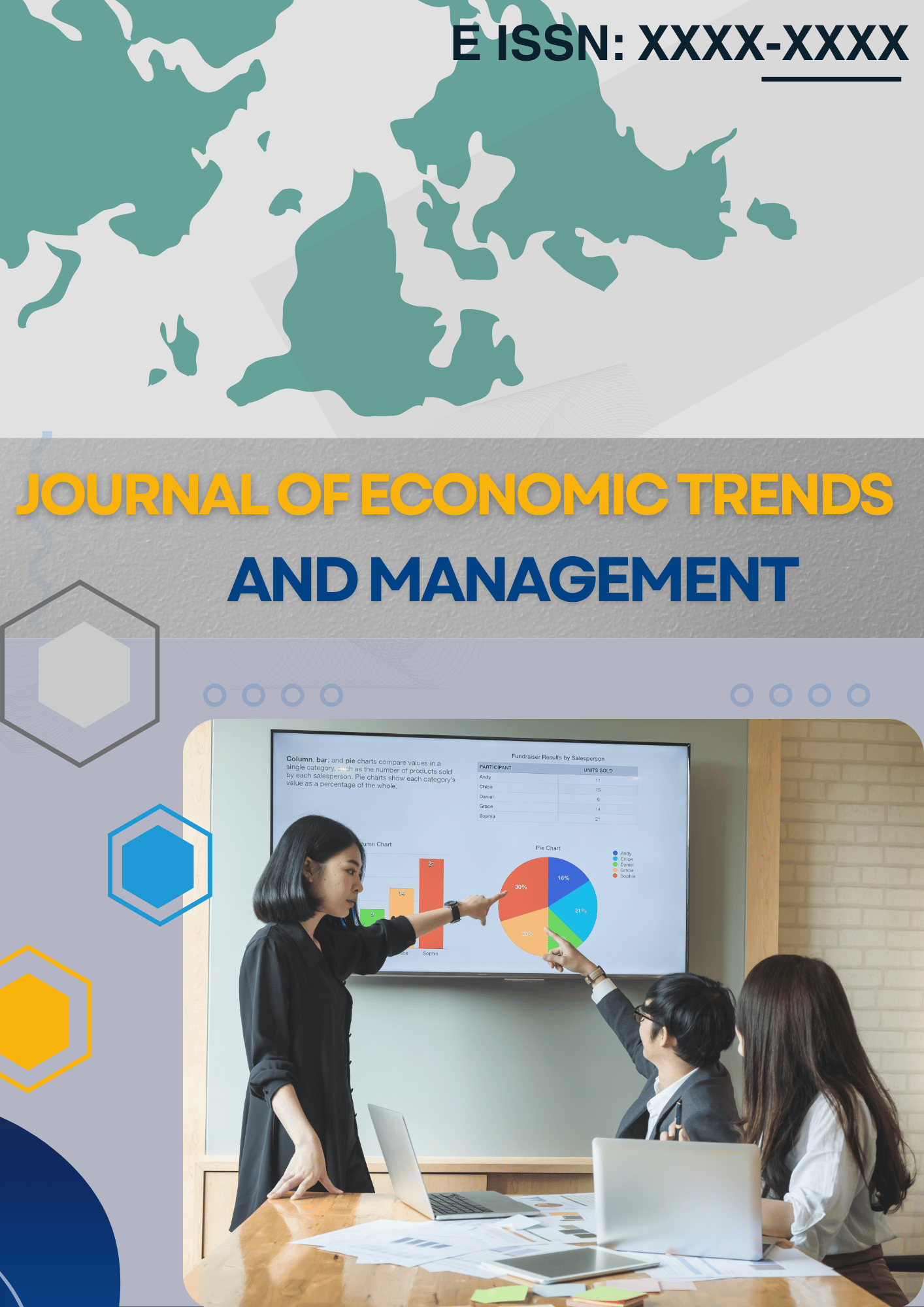Implementation of Project Risk Management to Reduce Time Delays and Cost Overruns in Medium-Scale Construction Projects
Keywords:
Project Risk Management , Construction Performance , Cost Overrun , Schedule Delay , Medium-Scale ProjectsAbstract
Purpose: This study aims to examine the extent to which the implementation of project risk management (PRM) influences time and cost performance in medium-scale construction projects. While formal risk management frameworks are widely acknowledged, their empirical impact on performance metrics particularly within the underexplored mid-tier construction sector remains insufficiently documented, especially in emerging economies such as Indonesia.
Subjects and Methods: The research adopts a quantitative explanatory design using data collected from five anonymized infrastructure projects executed between 2021 and 2023. Each project falls within the Indonesian Ministry of Public Works’ classification of medium-scale (IDR 10–100 billion). Key variables include planned vs. actual duration and cost, percentage deviations, and a composite score of PRM implementation across risk identification, analysis, planning, and monitoring dimensions. Data analysis employed descriptive statistics and Pearson correlation to assess the relationship between PRM implementation and project performance outcomes.
Results: The findings reveal a strong negative correlation between the level of PRM implementation and deviations in both project time (r = –0.78, p < 0.01) and cost (r = –0.72, p < 0.01). Projects with high PRM maturity demonstrated greater schedule discipline and cost containment, while those with lower PRM scores experienced significant overruns. These results empirically validate the premise that structured risk management serves as a key driver of project predictability and performance stability.
Conclusions: The study concludes that effective PRM implementation is not merely a technical add-on but a strategic governance mechanism that enables construction firms to mitigate uncertainty, safeguard resources, and align execution with project objectives. As construction environments become increasingly volatile, embedding risk management into project culture, processes, and leadership accountability is essential for sustainable delivery.
References
Alam, M., Zhang, Y., & Ghani, A. (2023). Construction delay factors and mitigation strategies in developing economies: Evidence from Southeast Asia. Journal of Construction Engineering and Management, 149(2), 04022123. https://doi.org/10.1061/(ASCE)CO.1943-7862.0002201
Alhabsi, S. S. (2024). Ethical considerations in obtaining informed consent in research participation. International Journal of Educational Contemporary Explorations, 1(1), 22-32.
Aven, T. (2022). Risk assessment and risk management: Review of recent advances on their foundation. European Journal of Operational Research, 302(2), 512–522. https://doi.org/10.1016/j.ejor.2021.01.004
Denicol, J., Davies, A., & Krystallis, I. (2023). What drives project performance? A systematic review of the relationship between governance mechanisms and outcomes. International Journal of Project Management, 41(1), 1–19. https://doi.org/10.1016/j.ijproman.2022.10.004
Doloi, H. (2023). Risk Management in Construction Projects: Principles and Practices. Routledge.
Eba, J., & Nakamura, K. (2022). Overview of the ethical guidelines for medical and biological research involving human subjects in Japan. Japanese Journal of Clinical Oncology, 52(6), 539-544.
Ehidiamen, A. J., & Oladapo, O. O. (2024). Enhancing ethical standards in clinical trials: A deep dive into regulatory compliance, informed consent, and participant rights protection frameworks. World Journal of Biology Pharmacy and Health Sciences, 20(1), 309-320.
Fauzi, M. A. (2022). Partial Least Square Structural Equation Modelling (PLS-SEM) in Knowledge Management Studies: Knowledge Sharing in Virtual Communities. Knowledge Management & E-Learning, 14(1), 103-124.
Flyvbjerg, B. (2021). How Big Things Get Done: The Surprising Factors That Determine Project Success or Failure. Currency.
Ghosh, S., & Ray, R. (2024). Integrated digital risk dashboards: A proactive tool for infrastructure project governance. Automation in Construction, 159, 105012. https://doi.org/10.1016/j.autcon.2023.105012
Hair, J. F., Hult, G. T. M., Ringle, C., & Sarstedt, M. (2021). A Primer on Partial Least Squares Structural Equation Modeling (PLS-SEM) (3rd ed.). Sage.
Halme, M., Piekkari, R., Matos, S., Wierenga, M., & Hall, J. (2024). Rigour vs. reality: Contextualizing qualitative research in the low‐income settings in emerging markets. British Journal of Management, 35(1), 36-51. https://doi.org/10.1111/1467-8551.12690’
Kementerian PUPR. (2022). Peraturan Menteri Pekerjaan Umum dan Perumahan Rakyat No. 14 Tahun 2022 tentang Standar Biaya dan Skala Proyek. Jakarta: PUPR.
Köhler, T., Smith, A., & Bhakoo, V. (2022). Templates in qualitative research methods: Origins, limitations, and new directions. Organizational Research Methods, 25(2), 183-210. https://doi.org/10.1177/10944281211060710
Malik, M., & Ali, I. (2024). Towards a critical realism synthesis of configurational and middle-range theorising. International Journal of Physical Distribution & Logistics Management, 54(7/8), 730-754. https://doi.org/10.1108/IJPDLM-05-2023-0185
Poquet, O. (2024). A shared lens around sensemaking in learning analytics: What activity theory, definition of a situation and affordances can offer. British Journal of Educational Technology, 55(4), 1811-1831. https://doi.org/10.1111/bjet.13435
Project Management Institute (PMI). (2021). A Guide to the Project Management Body of Knowledge (PMBOK® Guide) – 7th Edition. PMI.
Purwanto, A., & Sudargini, Y. (2021). Partial least squares structural squation modeling (PLS-SEM) analysis for social and management research: a literature review. Journal of Industrial Engineering & Management Research, 2(4), 114-123. https://doi.org/10.7777/jiemar.v2i4.168
Sarstedt, M., Richter, N. F., Hauff, S., & Ringle, C. M. (2024). Combined importance–performance map analysis (cIPMA) in partial least squares structural equation modeling (PLS–SEM): a SmartPLS 4 tutorial. Journal of Marketing Analytics, 12(4), 746-760. https://doi.org/10.1057/s41270-024-00325-y
Sarstedt, M., Ringle, C. M., & Hair, J. F. (2022). Partial Least Squares Structural Equation Modeling: A Practical Primer. Springer.
Downloads
Published
Issue
Section
License
Copyright (c) 2024 Journal of Economic Trends and Management

This work is licensed under a Creative Commons Attribution-ShareAlike 4.0 International License.






